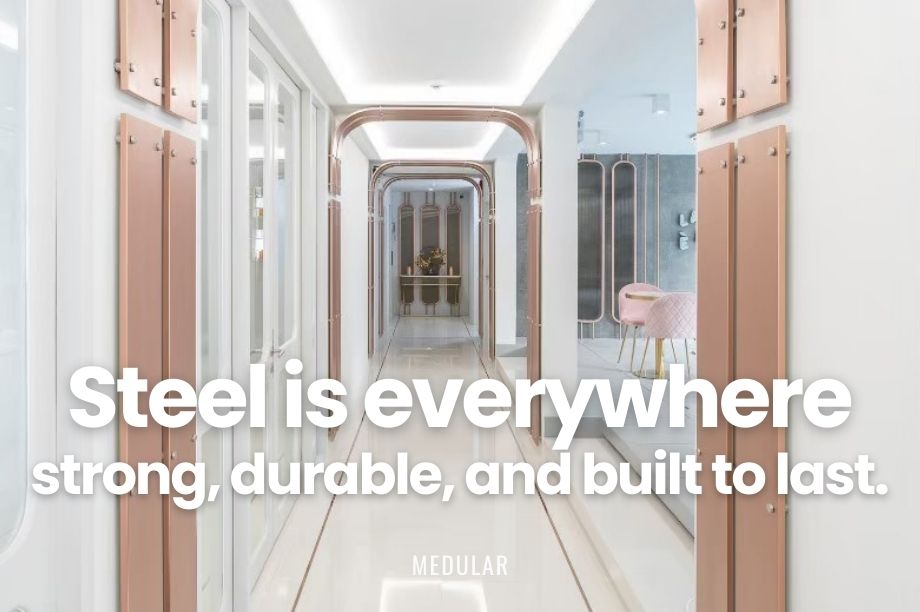"Steel": The essential material behind every structure, known for its strength and durability
Perd Surasak • 16 Apr 2025

When visiting a construction site, many people may notice that the steel structure is often the first visible sign of progress. This highlights the crucial role steel plays as the main structural element of a building.
One of the key reasons why steel structures remain popular is due to their strength, durability, and ability to withstand seismic activity effectively.
Moreover, steel construction allows for precise quality control, easier inspections, and straightforward maintenance. It also significantly reduces construction time compared to other structural systems.
Because of these advantages, steel structures are used in a wide variety of buildings—from small residential houses to large-scale projects like stadiums or even airports.
Recently, the author had the opportunity to visit the construction of Nimano Suites, a luxury hotel in Chiang Mai, which was completed in just a few months.
What was the key factor behind this rapid progress?
The answer lies in the use of steel structures, combined with prefabricated components produced in factories, instead of traditional brick-and-mortar methods. This approach significantly reduces onsite construction steps and time.
Some may wonder, “How durable are prefabricated components?” The reality is, with proper planning and material selection, a steel structure can support long-term use—especially when using high-quality steel from the start.
A single building typically includes various types of steel, each with different shapes and properties suited for specific functions. A commonly seen example is the H-Beam, known for its high load-bearing capacity and resistance to both tension and compression. As a result, H-Beams are often chosen for large structures like columns, roof frames, or multi-story buildings.
For the Nimano Suites project, H-Beams were also used as the main structural components, supporting the stacked prefabricated units. An additional benefit of steel is that it's lighter than concrete, which reduces the need for heavy foundations and piling, saving time, labor, and overall costs.
However, some people may confuse H-Beams and I-Beams, which look similar but serve different structural purposes.
H-Beams come in a wide range of sizes—from H100x50 mm to H900x300 mm—and are commonly used in buildings, factories, or large-scale projects like aircraft hangars.
I-Beams, on the other hand, are often designed for specialized industrial uses, such as crane rails in factories. They typically have thicker, tapered flanges, unlike H-Beams, which have consistent flange thickness.
Even when prefabricated components are not used, steel structures still offer notable advantages—ideal for tight spaces, easy to install or dismantle, and faster to work with compared to concrete, which requires extensive space and time for mixing and curing materials.
Connect with us to bring your vision to Life.
